Welcome to a comprehensive guide on oscilloscopes for beginners. Whether you are a hobbyist, an electronics enthusiast, or a student, this article aims to provide you with a solid understanding of what oscilloscopes are and how to use them effectively. Oscilloscopes are essential tools for visualizing and analyzing electrical waveforms, making them invaluable in various industries and applications.
What is an Oscilloscope?
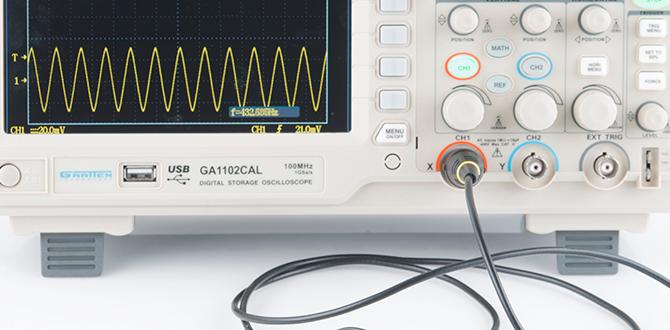
An oscilloscope, often referred to as an “O-scope,” is a device used to measure and display electrical waveforms visually. It captures and represents voltage signals over time on a graphical display, allowing users to analyze and troubleshoot electronic circuits. Oscilloscopes can help observe various waveform characteristics, such as frequency, amplitude, phase, and distortion, providing crucial insights into circuit behavior.
Definition and Purpose of an Oscilloscope
An oscilloscope is a sophisticated electronic instrument designed to measure and display voltage signals graphically. It allows users to visualize waveforms, detect abnormalities, and make accurate measurements, enabling effective circuit analysis and troubleshooting. Oscilloscopes have diverse applications ranging from electronics design and debugging to research and education.
Types of Oscilloscopes
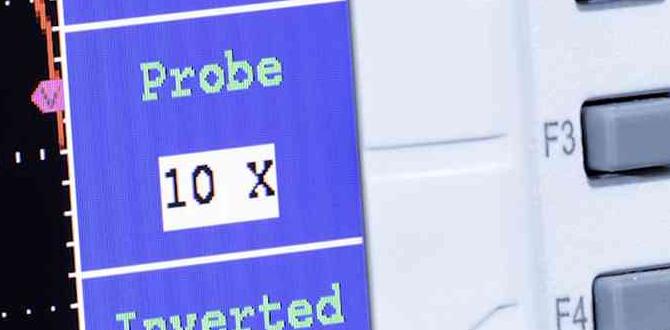
There are different types of oscilloscopes available, each with its advantages and applications. Understanding the various types can help you choose the most suitable option for your needs.
Analog Oscilloscopes
Analog oscilloscopes use analog circuits to amplify and display electrical waveforms. They offer a real-time view of the waveform on a cathode-ray tube (CRT) display. Analog oscilloscopes are known for their smooth waveform representation and ease of use, making them popular among beginners and those working with relatively low-frequency signals.
Digital Oscilloscopes
Digital oscilloscopes, also known as DSOs, digitize the incoming waveform and process it digitally to display on a built-in screen. They provide advanced features such as waveform storage, mathematical operations, and automatic measurements. Digital oscilloscopes are versatile, allowing users to analyze complex waveforms and perform advanced signal processing.
PC-Based Oscilloscopes
PC-based oscilloscopes rely on a computer’s processing power to analyze and display waveforms. They connect to a PC via a USB or Ethernet port, offering high-performance capabilities at a lower cost compared to standalone oscilloscopes. PC-based oscilloscopes often come with software that provides additional features and analysis tools.
Key Features and Specifications to Consider
When choosing an oscilloscope, it is important to consider various features and specifications to ensure it meets your specific requirements. Here are some key factors to keep in mind:
Bandwidth
Bandwidth refers to the range of frequencies an oscilloscope can accurately measure and display. It is a crucial specification to consider, as insufficient bandwidth can result in distorted waveforms and inaccurate measurements. Ensure the oscilloscope’s bandwidth matches your intended application’s frequency range.
Sampling Rate
The sampling rate determines the number of samples the oscilloscope can capture within a specific time. A higher sampling rate allows for more detailed waveform representation, especially for fast-changing signals. Consider your signal’s maximum frequency and choose an oscilloscope with an appropriate sampling rate.
Number of Channels
The number of channels determines the number of signals the oscilloscope can measure simultaneously. While a single-channel oscilloscope may suffice for simple applications, a higher-channel oscilloscope can capture multiple signals and enable easy comparison and analysis.
Display Type
Oscilloscopes come with different types of displays, such as CRT displays, LCD screens, or touchscreen interfaces. Each display type has its advantages and limitations, so choose the one that suits your preference and usability.
How to Use an Oscilloscope?
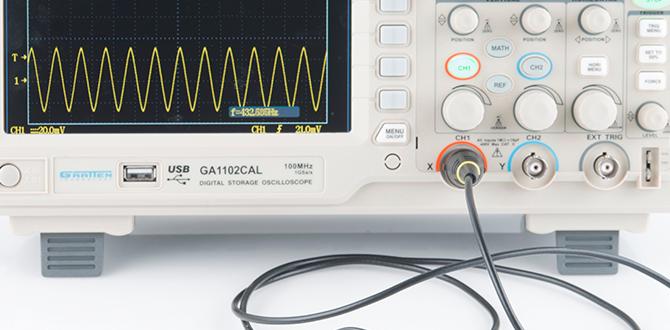
Using an oscilloscope may seem daunting at first, but with some basic guidance, it becomes a valuable tool in your electronics toolkit. Here are the fundamental steps to using an oscilloscope effectively:
Connecting the Oscilloscope
Start by connecting the probes to the oscilloscope’s input channels. Ensure proper grounding and adjust the probe attenuation settings if necessary. Connect the other end of the probes to the test points or circuit nodes you want to measure.
Adjusting Timebase and Voltage Controls
Set the timebase setting to adjust the horizontal scale of the oscilloscope’s display. This determines the time duration represented by each division on the screen. Adjust the voltage controls, such as the vertical position and gain, to ensure the waveform amplitude fits within the display’s vertical range.
Analyzing Waveforms
Observe the displayed waveform on the oscilloscope screen. Pay attention to the shape, frequency, and amplitude of the waveform. Use trigger controls to stabilize and position the waveform for more accurate analysis.
Making Measurements
An oscilloscope offers various measurement capabilities, such as voltage, frequency, rise time, and duty cycle. Utilize the measurement functions to quantitatively analyze different waveform parameters. Many oscilloscopes also provide automated measurement features for convenience.
Common Applications of Oscilloscopes
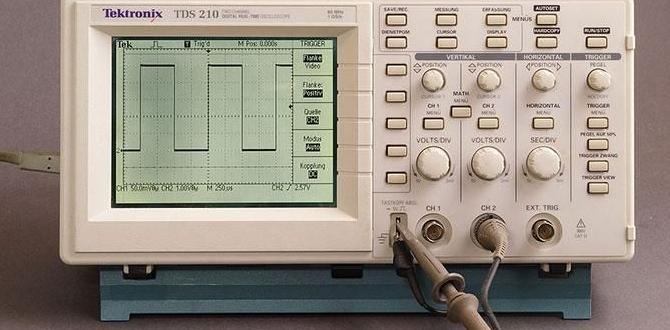
Oscilloscopes find widespread use in numerous industries and applications. Here are some common areas where oscilloscopes play a crucial role:
Troubleshooting Electrical Circuits
Oscilloscopes are invaluable tools for troubleshooting and diagnosing faults in electrical circuits. They help identify abnormalities, faulty components, and signal integrity issues, enabling efficient repair and maintenance.
Testing and Debugging Electronics
Engineers and technicians use oscilloscopes extensively in electronics testing and debugging. They help verify circuit performance, test signal quality, and identify issues during design, prototyping, and production stages.
Signal Analysis and Research
Oscilloscopes are indispensable in signal analysis and research endeavors. They are used to study and analyze complex waveforms, investigate system behavior, validate theoretical models, and explore the characteristics of various signals and phenomena.
Tips for Choosing the Right Oscilloscope for Beginners
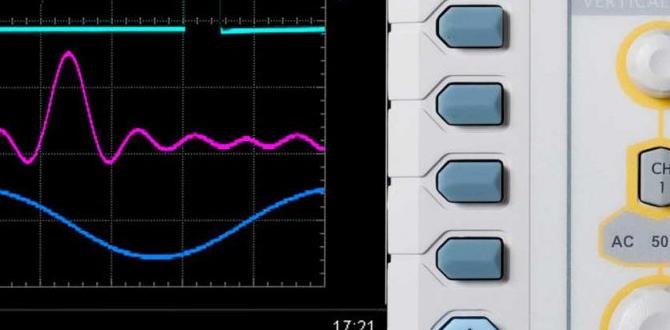
Choosing the right oscilloscope can be overwhelming, especially for beginners. Here are some tips to help you make an informed decision:
Determine your Budget and Needs
Set a budget based on your requirements and expected usage. Consider the frequency range, waveform complexity, and desired features to narrow down your options effectively.
Consider the Learning Curve
If you are new to oscilloscopes, opt for models with user-friendly interfaces and comprehensive documentation. Look for oscilloscopes that offer guided tutorials and built-in help features to support your learning process.
Seek Recommendations and Reviews
Research and read reviews from trusted sources and online communities to gather insights about different oscilloscope models. Seek recommendations from experienced users or consult with industry professionals for guidance.
Resources for Learning Oscilloscopes
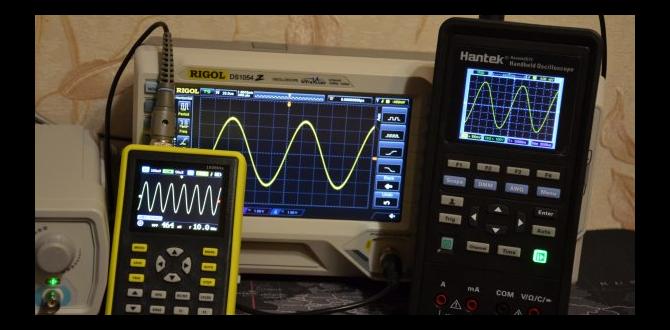
If you want to delve deeper into understanding oscilloscopes and honing your skills, consider utilizing the following resources:
Online Tutorials and Videos
Explore online platforms and websites that offer comprehensive tutorials, videos, and educational content on oscilloscopes. Websites such as YouTube, educational platforms, and manufacturer websites often provide valuable resources.
Book Recommendations
There are numerous books available that cover oscilloscope theory, operation, and applications. Some popular titles include “The Oscilloscope: Principles and Practice” by Ian Hickman and “Oscilloscopes for Radio Amateurs” by Andrew Barron.
Hands-on Workshops or Courses
Consider attending workshops or courses organized by technical institutes, universities, or manufacturers. These hands-on experiences can provide practical knowledge and further enhance your understanding of oscilloscopes.
Conclusion
Oscilloscopes are versatile tools that are indispensable in electronics and electrical engineering. By understanding their types, features, and applications, as well as learning how to use them effectively, beginners can harness the power of oscilloscopes for various purposes. Whether you are troubleshooting circuits, testing electronics, or conducting research, an oscilloscope will be an invaluable asset in your toolkit.
Frequently Asked Questions:
Q1: How does an oscilloscope work?
A1: Oscilloscopes work by capturing electrical signals through probes connected to the test points or circuit nodes. The captured signals are then amplified, digitized, and displayed on the oscilloscope screen, allowing visual analysis and measurements of various waveform characteristics.
Q2: Can oscilloscopes measure current?
A2: Oscilloscopes primarily measure voltage signals. To measure current, you need to use current probes or shunt resistors in conjunction with the oscilloscope. These accessories allow indirect current measurement through the voltage drop across the shunt or the magnetic field generated by the current.
Q3: What are some common waveform abnormalities to look for with an oscilloscope?
A3: When analyzing waveforms, look out for abnormalities such as distortion, overshoot, undershoot, ringing, noise, and irregularities in amplitude or frequency. These abnormalities can indicate circuit faults, improper signal transmission, or noise interference.
Q4: Can I use an oscilloscope for audio signal analysis?
A4: Yes, oscilloscopes are commonly used for audio signal analysis. They allow you to visualize audio waveforms, analyze frequency response, observe distortion, and measure characteristics like peak-to-peak voltage and phase shifts.
Q5: Are PC-based oscilloscopes as accurate as standalone oscilloscopes?
A5: PC-based oscilloscopes can provide similar accuracy to standalone oscilloscopes, depending on their specifications and the quality of the computer’s hardware. However, factors such as the computer’s processing speed and potential signal interference from other programs running simultaneously may affect the overall performance.